9.2: Intergroup Relations
- Last updated
- Save as PDF
- Page ID
- 104082

- Erika Gutierrez, Janét Hund, Shaheen Johnson, Carlos Ramos, Lisette Rodriguez, & Joy Tsuhako
- Long Beach City College, Cerritos College, & Saddleback College via ASCCC Open Educational Resources Initiative (OERI)
The experiences of Asian Americans and Pacific Islanders (AAPI) are diverse and different groups have experienced different intergroup consequences. For example, the experiences for some groups is best explained by genocide, such as with Cambodian Americans, as the civil war in their home country in the 1970s led many to their migration to the United States as refugees, fleeing oppression and death. In contrast, to survive and thrive in U.S. society, many Asian Americans formed ethnic enclaves which is a form of separatism and others advocate for pan-Asianism to challenge oppressive and discriminatory practices.
Patterns of Intergroup Relations: Asian Americans and Pacific Islanders
- Extermination/Genocide: The deliberate, systematic killing of an entire people or nation (e.g. Cambodian genocide).
- Expulsion/ Population Transfer: The dominant group expels the marginalized group (e.g. refugees from Viet Nam).
- Internal Colonialism: The dominant group exploits the marginalized group (e.g. Chinese Exclusion Act of 1882).
- Segregation: The dominant group structures physical, unequal separation of two groups in residence, workplace & social functions (e.g. prison camps during WWII).
- Sepratism: The marginalized group desires physical separation of two groups in residence, workplace & social functions (e.g. ethnic enclaves).
- Fusion/ Amalgamation: Race-ethnic groups combine to form a new group (e.g. Hapa).
- Assimilation: The process by which a marginalized individual or group takes on the characteristics of the dominant group (e.g. Asian immigrants changing names to sound more “American”).
- Pluralism/ Multiculturalism: Various race-ethnic groups in a society have mutual respect for one another, without prejudice or discrimination (e.g. pan-Asianism).
History of Intergroup Relations
Chinese immigration came to an abrupt end with the Chinese Exclusion Act of 1882. This act was a result of anti-Chinese sentiment burgeoned by a depressed economy and loss of jobs. White workers blamed Chinese migrants for taking jobs, and the passage of the Act meant the number of Chinese workers decreased. Chinese men did not have the funds to return to China or to bring their families to the United States, so they remained physically and culturally segregated in the Chinatowns of large cities. Later legislation, the Immigration Act of 1924, further curtailed Chinese immigration. The Act included the race-based National Origins Act, which was aimed at keeping U.S. ethnic stock as undiluted as possible by reducing “undesirable” immigrants. The Chinese Exclusion Act of 1882 is an example of internal colonialism because the Chinese workers were economically exploited while in the United States. It was not until after the Immigration and Nationality Act of 1965 that Chinese immigration again increased, and many Chinese families were reunited.
Chinese/Asian Exclusion
Many Chinese men had been recruited by the railroad companies to work on the Transcontinental Railroad—a vast, complex, engineering feat to span the continent and link the entire expanse of the middle of North America, from the Atlantic to the Pacific ocean. By 1887, the project was completed and many of the Chinese workers, having saved the majority of their pay, returned home, or, conversely, began to send for their families—parents, siblings, wives and children, sweethearts, cousins—beginning a steady migration stream from China to the United States. Many of these former railroad workers settled along the West Coast and began to compete, economically, with the white population of the region. Feeling serious economic pressure from the Chinese immigrants, whites on the West Coast petitioned Congress to stop migration from China. Congress complied and passed a bill titled the “Asian Exclusionary Act.”
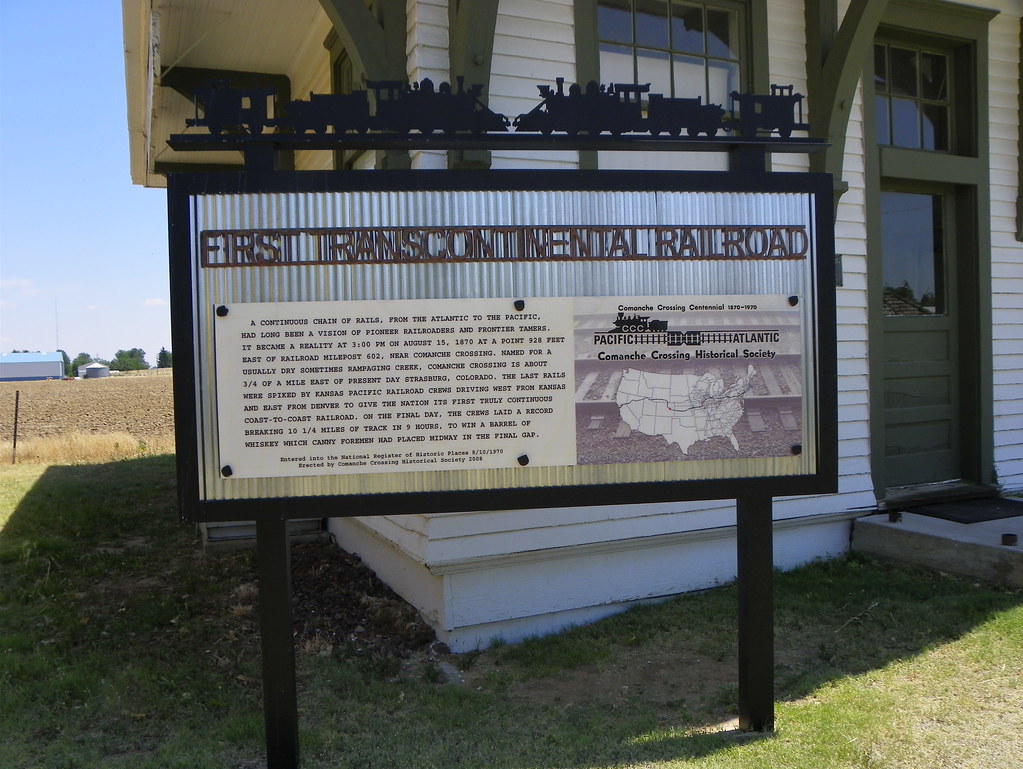
Expansion of Asian Exclusion
From the 15th century through the 19th century, Japan was a xenophobic, feudal society, ostensibly governed by a God-Emperor, but in reality ruled by ruthless, powerful Shoguns. Japan’s society changed little during the four centuries of samurai culture, and it was cut off from the rest of the world in self-imposed isolation, trading only with the Portuguese, Spanish, English, and Chinese, and then not with all of them at once, often using one group as middlemen to another group. In the mid-19th century, (1854), the United States government became interested in trading directly with Japan in order to open up new export markets and to import Japanese goods at low prices uninflated by middleman add-ons. Commodore Matthew Perry was assigned to open trade between the United States and Japan. With a flotilla of war ships, Perry crossed the Pacific and berthed his ships off the coast of the Japanese capital. Perry sent letters to the emperor that were diplomatic but insistent. Perry had been ordered not to take no for an answer, and when the emperor sent Perry a negative response to the letters, Perry maneuvered his warships into positions that would allow them to fire upon the major cities of Japan. The Japanese had no armaments or ships that could compete with the Americans, and so, capitulated to Perry. Within thirty years, Japan was almost as modernized as its European counterparts. They went from feudalism to industrialism almost over night.
Gentlemen's Agreement of 1907
Chinese immigration to California boomed during the Gold Rush of 1852, but the strict Japanese government practiced policies of isolation that thwarted Japanese emigration. It was not until 1868 that the Japanese government lessened restrictions and that Japanese immigration to the United States began. Anti-Chinese sentiment motivated American entrepreneurs to recruit Japanese laborers. In 1885, the first Japanese workers arrived in the Kingdom of Hawaii, which was then independent.
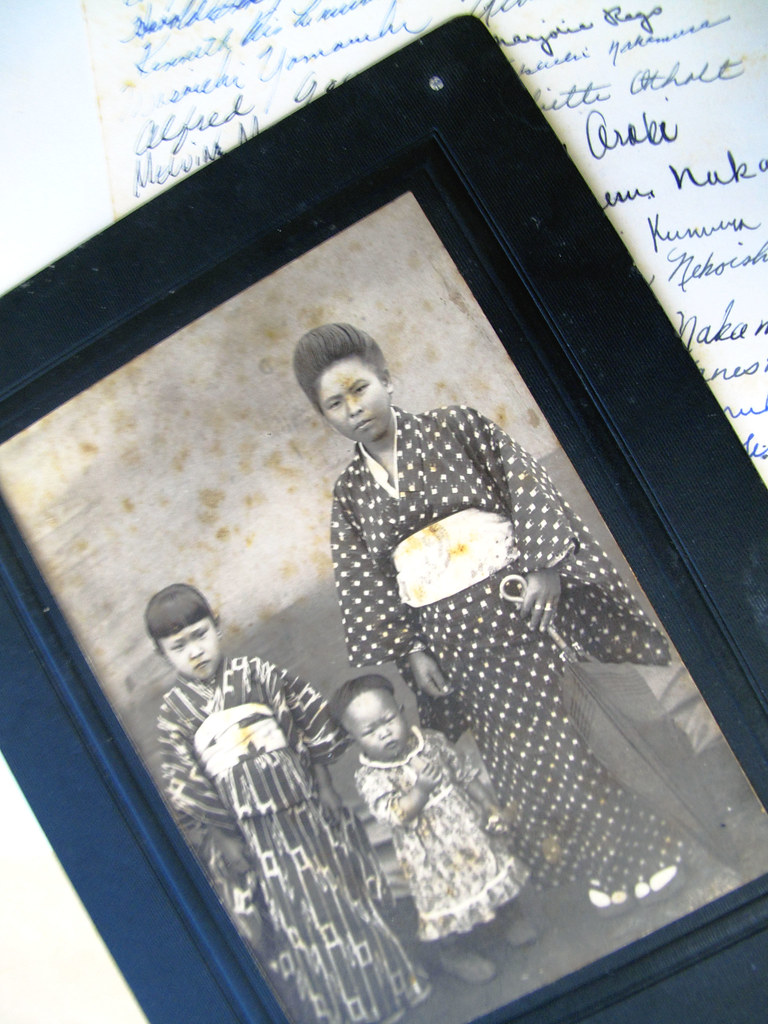
Most Japanese immigrants wanted to reside in America permanently and came in family groups, in contrast to the Chinese immigration of young men, most of whom soon returned to China. They assimilated to American social norms, such as on clothing. Many joined Methodist and Presbyterian churches.
As the Japanese population in California grew, they were seen with suspicion as an entering wedge by Japan. By 1905, anti-Japanese rhetoric filled the pages of the San Francisco Chronicle, and Japanese Americans did not live only in Chinatown but throughout the city. In 1905, the Japanese and Korean Exclusion League was established and promoted four policies:
- Extension of the Chinese Exclusion Act to include Japanese and Koreans
- Exclusion by League members of Japanese employees and the hiring of firms that employ Japanese
- Initiation of pressure the School Board to segregate Japanese from white children
- Initiation of a propaganda campaign to inform Congress and the President of that "menace".
Tensions had been rising in San Francisco, and since the 1905 decisive Japanese victory against Russia, Japan demanded treatment as an equal. The result was a series of six notes communicated between Japan and the United States from late 1907 to early 1908. The immediate cause of the Agreement was anti-Japanese nativism in California. In 1906, the San Francisco Board of Education passed a regulation whereby children of Japanese descent would be required to attend separate, segregated schools. At the time, Japanese immigrants made up approximately 1% of the population of California, many of whom had immigrated under a treaty in 1894 that had assured free immigration from Japan.
In the Agreement, Japan agreed not to issue passports for Japanese citizens wishing to work in the Continental United States, thus effectively eliminating new Japanese immigration to the United States. In exchange, the United States agreed to accept the presence of Japanese immigrants already residing there; to permit the immigration of wives, children, and parents; and to avoid legal discrimination against Japanese American children in California schools. There was also a strong desire on the part of the Japanese government to resist being treated as inferiors. Japan did not want the United States to pass any such legislation as had happened to the Chinese under the Chinese Exclusion Act. US President Theodore Roosevelt, who had a positive opinion of Japan, accepted the Agreement as proposed by Japan to avoid more formal immigration restrictions.
This section licensed CC BY-SA. Attribution: The Gentlemen's Agreement of 1907 (Wikipedia) (CC BY-SA 4.0)
In 1924, anti-minority sentiment in the United States was so strong that the Ku Klux Klan had four million, proud, openly racist members thousands of whom were involved in a parade down Pennsylvania Avenue in Washington, DC, that was watched by thousands of Klan supporters, and other Americans. Their definition of who should qualify as American was largely reflected the United States Supreme Court rulings on questions of naturalization, which largely excluded East and South Asian immigrants until the 1940s. For example, in 1922 the Supreme Court ruled in Ozawa v. United States that Takao Ozawa who was born in Japan but had live in the United States for 20 years, was not considered Caucasian which meant he did not fit the popular definition of a "free white person" as the Naturalization Act of 1906 specified. Within three months, Justice George Sutherland authored a similarly unfavorable ruling in a Supreme Court case concerning the petition for naturalization of a Sikh immigrant from the Punjab region in British India, who identified himself as "a high caste Hindu of full Indian blood" in his petition, United States v. Bhagat Singh Thind. The upshot of this ruling was that like the Japanese, "high-caste Hindus, of full Indian blood" were not "free white persons" and were racially ineligible for naturalized citizenship. To support this conclusion, Justice Sutherland reiterated Ozawa's holding that the words "white person" in the naturalization act were "synonymous with the word 'Caucasian' only as that word is popularly understood".
World War II and Anti-Japanese Policies
On December 7, 1941, at 7:55 A.M. local time the Japanese fleet in the South Pacific launched 600 hundred aircraft in a surprise attack against U.S. Naval forces at Pearl Harbor, Hawaii. Within four hours, 2, 400 people, mostly military personnel had been killed, including the 1,100 men who will be entombed forever in the wreckage of the U.S.S. Arizona when it capsized during the attack. Although this was a military target, the United States was not at war when the attack occurred.
The U.S. response to the attack was segregation wherein the dominant group structures physical separation of two groups, in this case Japanese, German and Italian-descended Americans and everyone else. Within 3 months, on February 19, 1942, President Franklin D. Roosevelt signed and issue Executive Order 9066 which authorized the secretary of war to prescribe certain areas as military zones, clearing the way for the incarceration of these groups in U.S. concentration camps. As a result, approximately 112,000 men, women, and children of Japanese ancestry were evicted from the West Coast of the United States and held in American concentration camps and other confinement sites across the country. Japanese Americans in Hawaii were not incarcerated in the same way, despite the attack on Pearl Harbor. Although the Japanese American population in Hawaii was nearly 40% of the population of Hawaii itself, only a few thousand people were detained there, supporting the eventual finding that their mass removal on the West Coast was motivated by reasons other than "military necessity" (U.S. Department of State). The fact is that the labor of Japanese Americans in Hawaii was crucial to the economic health of Hawaii which protected them from internment in the prison camps.
In less than six months after the attack, Congress passed the Japanese Relocation Act. Below, is reproduced the order that was posted in San Francisco.
The Japanese American Relocation Order
THE JAPANESE AMERICAN RELOCATION ORDER
WESTERN DEFENSE COMMAND AND FOURTH ARMY
WARTIME CIVIL CONTROL ADMINISTRATION
Presidio of San Francisco, California
May 3, 1942
INSTRUCTIONS TO ALL PERSONS OF JAPANESE ANCESTRY
Living in the Following Area:
All of that portion of the City of Los Angeles, State of California, within that boundary beginning at the point at which North Figueroa Street meets a line following the middle of the Los Angeles River; thence southerly and following the said line to East First Street; thence westerly on East First Street to Alameda Street; thence southerly on Alameda Street to East Third Street; thence northwesterly on East Third Street to Main Street; thence northerly on Main Street to First Street; thence north-westerly on First Street to Figueroa Street; thence northeasterly on Figueroa Street to the point of beginning.
Pursuant to the provisions of Civilian Exclusion Order No. 33, this Headquarters, dated May 3, 1942, all persons of Japanese ancestry, both alien and non-alien, will be evacuated from the above area by 12 o'clock noon, P. W. T., Saturday, May 9, 1942.
No Japanese person living in the above area will be permitted to change residence after 12 o'clock noon, P. W. T., Sunday, May 3, 1942, without obtaining special permission from the representative of the Commanding General, Southern California Sector, at the Civil Control Station located at
Japanese Union Church,
120 North San Pedro Street,
Los Angeles, California
SEE CIVILIAN EXCLUSION ORDER NO. 33
Such permits will only be granted for the purpose of uniting members of a family, or in cases of grave emergency.
The Civil Control Station is equipped to assist the Japanese population affected by this evacuation in the following ways:
1. Give advice and instructions on the evacuation.
2. Provide services with respect to the management, leasing, sale, storage or other disposition of most kinds of property, such as real estate, business and professional equipment, household goods, boats, automobiles and livestock.
3. Provide temporary residence elsewhere for all Japanese in family groups.
4. Transport persons and a limited amount of clothing and equipment to their new residence.
The Following Instructions Must Be Observed:
1. A responsible member of each family, preferably the head of the family, or the person in whose name most of the property is held, and each individual living alone, will report to the Civil Control Station to receive further instructions. This must be done between 8:00 A. M. and 5:00 P. M. on Monday, May 4, 1942, or between 8:00 A. M. and 5:00 P. M. on Tuesday, May 5, 1942.
2. Evacuees must carry with them on departure for the Assembly Center, the following property:
(a) Bedding and linens (no mattress) for each member of the family;
(b) Toilet articles for each member of the family;
(c) Extra clothing for each member of the family;
(d) Sufficient knives, forks, spoons, plates, bowls and cups for each member of the family;
(e) Essential personal effects for each member of the family.
All items carried will be securely packaged, tied and plainly marked with the name of the owner and numbered in accordance with instructions obtained at the Civil Control Station. The size and number of packages is limited to that which can be carried by the individual or family group.
3. No pets of any kind will be permitted.
4. No personal items and no household goods will be shipped to the Assembly Center.
5. The United States Government through its agencies will provide for the storage, at the sole risk of the owner, of the more substantial household items, such as iceboxes, washing machines, pianos and other heavy furniture. Cooking utensils and other small items will be accepted for storage if crated, packed and plainly marked with the name and address of the owner. Only one name and address will be used by a given family.
6. Each family, and individual living alone will be furnished transportation to the Assembly Center or will be authorized to travel by private automobile in a supervised group. All instructions pertaining to the movement will be obtained at the Civil Control Station.
Go to the Civil Control Station between the hours of 8:00 A. M. and 5:00 P. M., Monday, May 4, 1942, or between the hours of
8:00 A. M. and 5:00 P. M.,
Tuesday, May 5, 1942, to receive further instructions.
Lieutenant General, U. S. Army
Commanding
This map shows the location of the American concentration camps where Japanese Americans were interned during WWII.

In 1943, Fred Korematsu, with the assistance of the American Civil Liberties Union (ACLU) filed suit in federal court arguing that it was unconstitutional to deprive American citizens of the their civil rights without due process of law. The Supreme Court of the United States decided that, in times of great national strife, it was Constitutional to deprive one specific segment of the population of their civil rights because of the potential for harm by that specific group. You might be interested to know that this decision has never been overturned, which means that it is still the law of the land. A similar case Hirabayashi v. United States, (1943), was a case in which the United States Supreme Court held that the application of curfews against members of a people of color were constitutional when the nation was at war with the country from which that group's ancestors originated.
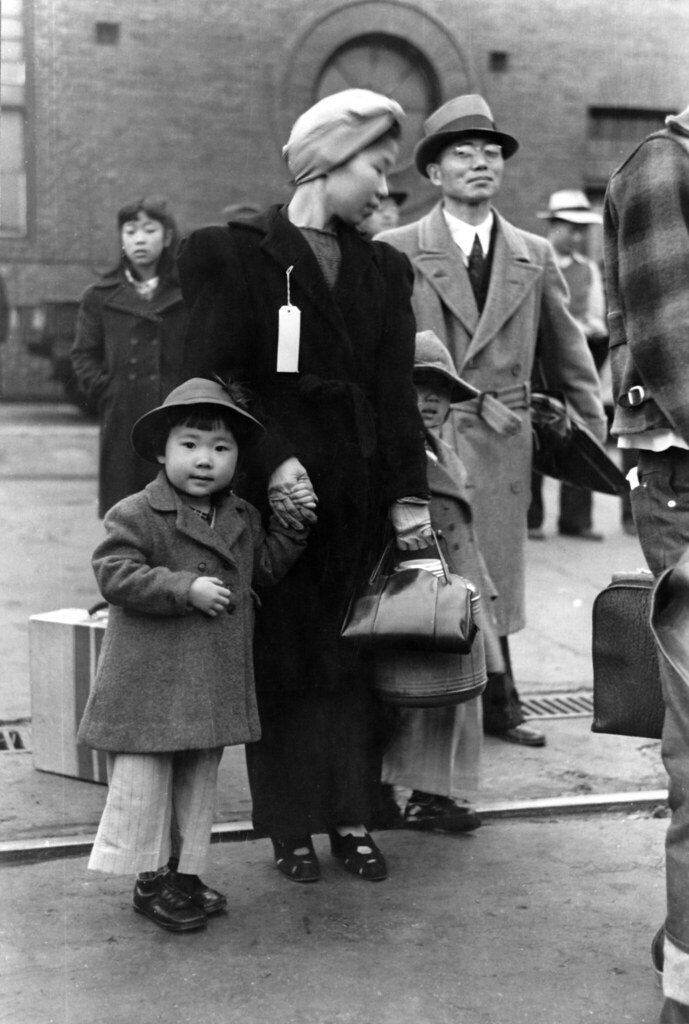
Although Japanese Americans have deep, long-reaching roots in the United States, their history here has not always been smooth. The California Alien Land Law of 1913 was aimed at them and other Asian immigrants, and it prohibited aliens from owning land. An even uglier action was the Japanese internment camps of World War II, discussed earlier as an illustration of expulsion.
Cambodian Genocide
One example of extermination/genocide is the period from 1975-1979 in Cambodia when the Khmer Rouge killed approximately 1.2-1.7 million people, or approximately 20% of the population (Williams, 2005). The political philosophy that drove these atrocities required a restructuring of the social and economic order of Cambodia and the "persecution and elimination" of those deemed a threat to the new political state (Ratner, S. & Abrams, J., 1997). After the Vietnamese invaded Cambodia in 1979 and ended the reign of terror of the Khmer Rouge, Cambodians fled to refugee camps and eventually resettled in Western countries such as Australia, Canada, France and the United States.
As a result, the largest population of Cambodians outside of southeast Asia resides in Long Beach, California. Though these refugees were eligible for a variety of welfare programs, they still often had to combine welfare with low wage and cash jobs to survive and raise children, not unlike other working class families and ethnic minorities, in addition to coping with the mental and physical health conditions that made it difficult for them to learn and work in English (Quintiliani, 2009). Cambodian Americans contend with "model minority" stereotypes while also being considered the "Black sheep" of the Asian community (Ly, 2003, p. 119). Under the Khmer Rouge, any sign of wealth or education meant death, contrasting that experience with immigration from Japan, China, and Korea which was largely driven by a desire for better standards of living and new opportunities, one can see how important it is to consider how these contexts shapes different behavior and outcomes of these groups in the United States. Unlike these other East Asian groups, Cambodian parents rarely pressure their children to pursue higher education, which in part explains why they have the lowest percentage of college and graduates and the highest percentage of high school dropouts (Ly, 2003). These realities expose the inaccuracy of one of the most persistent stereotypes about Asian Americans: That they are all the same. As exemplified by the experiences of Cambodian Americans, this stereotype can erase the different challenges some groups face and can also prevent those groups from receiving the specialized attention and supports they need.
Why Enclaves Are So Popular
On the continuum of intergroup relations, ethnic enclaves are an example of separatism. As Sociologists and other social scientists note many reasons why these ethnic enclaves are so popular with new immigrants and Asian Americans who have lived in the U.S. all their lives. They actually have different definitions for an ethnic "community" versus an ethnic "enclave." Without getting into the academic details too much, enclaves are ethnic communities that have a well-developed economic structure that operates mainly through racial-ethnic dynamics.
At any rate, we will discuss the issue of Asian American small businesses in another section. For now, we'll focus on how these ethnic enclaves grew so quickly and why they continue to thrive. In one word, it's because of immigration. Immigrants from Asia keep coming to these ethnic communities and infuse them with new life.
There are many theories on why people immigrate to the U.S., especially from Asian countries. Again, without getting too academic, the usual scenario goes something like this: American multinational corporations set up businesses in foreign countries and soon begin to dominate that country's politics and economy. This "globalization of capital" disrupts and transforms the traditional way people in these Asian countries make a living as the fundamental structure of their national economy changes from one dominated by farming and agriculture to the beginnings of a modern capitalist economy that emphasizes manufacturing and export sectors.

Many workers struggle to survive economically, to adapt to these rapid changes, and many become "displaced" (i.e., they lose their jobs or their land). Nonetheless, having already been exposed to U.S. culture, either through direct contact with those connected to the American businesses now operating in their country or through TV programs and U.S. media portrayals, many workers dream about working in the U.S. and earning lots of money. Their expectations for "the good life" become heightened but they also realize that they can't achieve these new goals in their current situation. They also see that by working in the U.S. and earning more money, they can help out other family members who have also been displaced.
In the meantime, companies in the U.S. are looking to hire immigrant workers who are frequently willing work for lower wages than U.S.-born workers. Many times, these companies actively recruit foreign workers to come to the U.S. Further, earlier immigrants from that country help in the immigration process by providing helpful information about jobs or assistance in the actual immigration and adjustment process. After this initial cycles, immigration becomes almost self-perpetuating through these established social networks as immigrant workers repeat the cycle of helping their family, relatives, and friends come to the U.S. to find work.
Once these Asian immigrants get to the U.S., they frequently end up living or working in these established Asian enclaves. This makes sense because these enclaves give them a sense of familiarity and emotional comfort, which makes it easier for them to adapt to life in the U.S. They also are more likely to get a job in the enclave, especially if they are not fluent enough in English to get a job outside the enclave. Being employed also helps them adjust to their new life in the U.S.
Finally, these new workers help these small ethnic businesses survive and even prosper, perhaps to the point where they can contribute to the local economy in the form of taxes and hiring more workers, Asian and non-Asian. In the meantime, non-Asians are able to learn about and enjoy the rich Asian culture and food of these enclaves. These new understandings and friendships can form the bridge that helps us to overcome the old suspicions of "us" versus "them" and that immigrants can be Americans too.
At the same time, many point out that not everything is always quite so rosy for these Asian immigrant workers. They argue that many Asian business owners are more than willing to exploit the relative powerlessness of these new immigrants and their willingness to accept lower wages and less-than-optimum working conditions. Specifically, many Asian-owned sweatshops, restaurants, and other small businesses have been accused of taking advantage of their own people in this manner for their own financial gain.
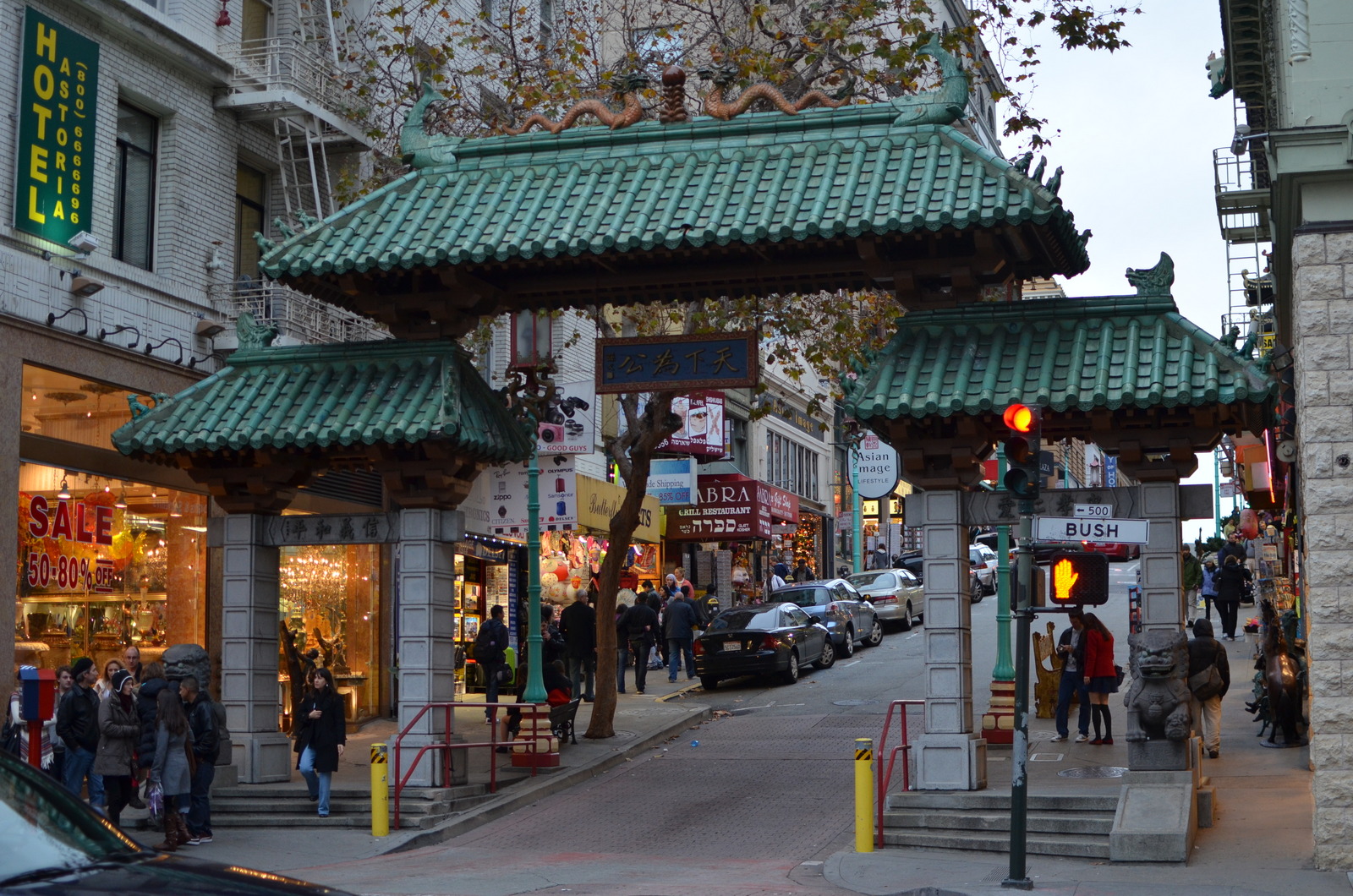
Figure \(\PageIndex{6}\): Vibrant Asian enclaves are everywhere. (CC BY-NC-ND 2.0; Owen and Aki via Flickr)
In fact, many Asian American non-profit community organizations were established to protest against these exploitative conditions by picketing Asian small businesses and pressuring their owners to improve working conditions and wages, and by trying to unionize these immigrant workers. Academic research also shows that working within an ethnic enclave is frequently beneficial for Asian business owners but not for their workers who may be able to earn more and enjoy slightly better working conditions in jobs outside the ethnic enclave.
On the other hand, other scholars argue that while immigrant workers in ethnic enclaves may be slightly '"penalized" in terms of wages and working conditions, they benefit in other ways. Specifically, they enjoy the psychological familiarity and comfort of being surrounded by others like them as they adapt to a strange new society. They also learn the ins and outs of running a small business; in fact, many workers eventually go on to opening up their own small businesses, sometimes by buying the business from their former owners.
In short, while there are some disadvantages for workers in the ethnic enclave, the fact remains that Asian ethnic communities have the enormous potential to benefit everyone involved -- new immigrants, established Asian Americans, the local non-Asian community, and American society as a whole.
What's in a Name?
Like other communities of color, Asian Americans must contend with an Anglo-dominant society that views those with "foreign sounding" names as outsiders. Some assimilate, or take on the characteristics of the dominant group, by anglicizing their names, like many Chinese international students in the United States (Fang & Fine, 2019), while others endure microaggressions of having their names mispronounced or changed by educators and others in position of authority (Kohli & Solórzano, 2012). On the one hand, as Kohli & Solórzano argue these practices can reinforce the idea of cultural and racial hierarchy of inferiority of non-Anglos and leave lasting impacts on the self-perceptions of children, especially, but in the case of taking on chosen names can also allow for self-expression and agency to select a name that projects an imagined self (Fang & Fine, 2019).
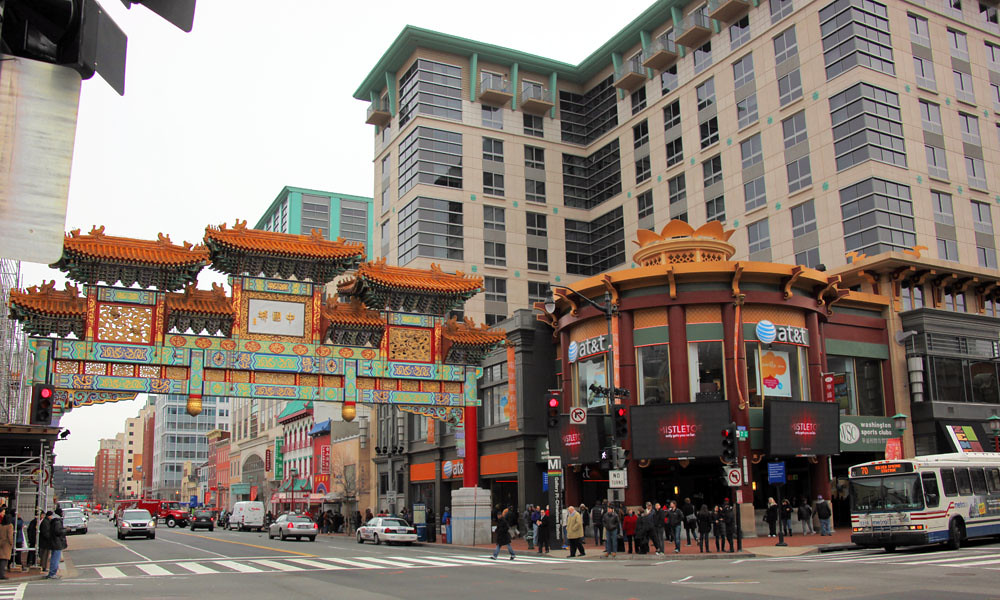
Thinking Sociologically
Do you have a non-Anglo name? If you do, how do you feel about the idea of changing it in order to assimilate? If not, imagine that you did. Would you want to change your name or keep it? Why?
All Mixed Up?
An example of fusion/amalgamation which is where racial or ethnic groups combine to form a new group, is the case of "Hapas", or those that have one Asian parent and one non-Asian parent. Traditionally, multiracial Asian Americans, like many other multiracial individuals, have been looked upon with curiosity and/or suspicion by the both sides of their ancestry and the rest of society. In the past, the racist "one drop rule" dictated that anyone who even had any trace of non-white ancestry (i.e., a single drop of non-white blood) was "colored" and therefore non-white. To a certain extent today, many Americans still see multiracial Asian Americans as "half-breeds" and don't consider them to be truly white, Black, etc. or even truly American.
On the other hand, many in the conventional Asian American community also do not consider multiracial Asian Americans to be truly "Asian" and rather, see them as "whitewashed." Politically, many worry that the Asian American community will lose government funding if people who previously identified themselves as solely Asian now identify themselves as multiracial. In other words, many multiracial Asian Americans still face distrust and even hostility from both their Asian and non-Asian sides.
Sociologists argue that one of the defining characteristics of the U.S. racial/ethnic landscape is the tendency for Americans, white and non-white alike, to prefer a sense of clarity when it comes to racial/ethnic identity. In situations where the racial/ethnic background of a person cannot be immediately identified, many Americans become uncomfortable with this cultural ambiguity. This may help to explain the traditional emphasis on prohibiting the "mixing" of different races, a motivation that continues to drive many neo-Nazi or white supremacist ideologies.
As a result of these cultural dynamics, many (although certainly not all) multiracial Asian Americans encounter difficulties in establishing their own ethnic identity as they try to fit into both the Asian American community and mainstream American society. As many multiracial Asian American writers have described, as they grow up, they are frequently caught between both sides of their racial/ethnic background. Frequently this involves feeling alienated, marginalized, and that they do not legitimately belong in either community, Asian or non-Asian.
Moving Forward and Forging A New Identity
However, recent research suggests that, rather than trying to fit themselves into just an Asian identity or just a white identity, multiracial Asian Americans report the most happiness and the least stress when they create their own unique racial/ethnic identities that combine all of their ancestries. In other words, instead of trying to "pass" as a member of a single racial group, they may be better off when they actively create their own definition of fitting in that is based on synthesizing their unique and multiple characteristics. In doing so, multiracial Asian Americans develop a sense of ownership and pride in their new identity, rather than trying to seek acceptance into the preexisting racial groups.
As it turns out, monoethnic Asian Americans have been doing something like this for many generations, as they reconcile and negotiate their own identities as both Asian and American. In this sense, we might say that multiracial Americans are now going through the same process that Asian Americans have been going through for years. In other words, monoethnic Asian Americans and multiracial Americans share a common process of actively shaping their identities through combining elements from diverse cultures can help these communities connect with one other and bridge cultural differences.
As the incidence of interracial marriage and by implication, numbers of multiracial Asian Americans continues to increase, multiracial Asian Americans have the opportunity to both assert their own unique experiences and characteristics while also participating in the larger Asian American community and mainstream American society in general. In the process of doing so, multiracial Asian Americans are likely to play a central role in the demographic, political, and cultural evolution of a diversifying American society.
Anti-Asian Racism & Violence
Ever since the first Asians arrived in America, there has been anti-Asian racism. This includes prejudice and acts of discrimination. For more than 200 years, Asian Americans have been denied equal rights, subjected to harassment and hostility, had their rights revoked and imprisoned for no justifiable reason, physically attacked, and murdered.
Ethnic Competition Leads to Violence
As the section on Asian American history discussed, numerous acts of discrimination against Chinese immigrants culminated in the Chinese Exclusion Act of 1882. For the first and so far only time in American history, an entire ethnic group was singled out and forbidden to step foot on American soil. Although this was not the first such anti-Asian incident, it symbolizes the legacy of racism directed against our community.
It was followed by numerous denials of justice against Chinese and Japanese immigrants seeking to claim equal treatment to land ownership, citizenship, and other rights in state and federal court in the early 1900s. Many times, Asians were not even allowed to testify in court. Perhaps the most infamous episode of anti-Asian racism was the unjustified imprisonment of Japanese Americans during World War II -- done solely on the basis of their ethnic ancestry.
One may think that as the Asian American population becomes larger and more integrated into the mainstream American social and political institutions that incidents of anti-Asian racism would occur less often. In fact, the opposite has been true. The last 20 years or so has seen Asian Americans become the fastest-growing targets for hate crimes and violence.
It seems that whenever there are problems in American society, political or economic, there always seems to be the need for a scapegoat -- someone or a group of people who is/are singled out, unjustifiably blamed, and targeted with severe hostility. Combined with the cultural stereotype of Asian Americans as quiet, weak, and powerless, more and more Asian Americans are victimized, solely on the basis of being an Asian American.
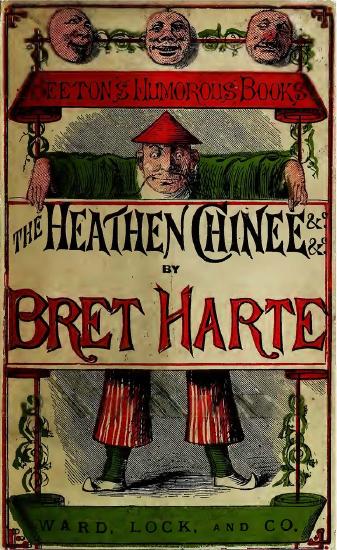
Figure \(\PageIndex{9}\): "EM_ark13960t1ck18s1t_001" (CC PDM 1.0; jonathanhgrossman)
License to Commit Murder = $3,700
Perhaps the most graphic and shocking incident that illustrates this process was the murder of Vincent Chin in 1982. Vincent was beaten to death by two white men (Ronald Ebens and Michael Nitz) who called him a "jap" (even though he was Chinese American) and blamed him and Japanese automakers for the current recession and the fact that they were about to lose their jobs. After a brief scuffle inside a local bar/night club, Vincent tried to run for his life until he was cornered nearby, held down by Nitz while Ebens repeatedly smashed his skull and bludgeoned him to death with a baseball bat.
The equally tragic part of this murder were how Vincent's murderers were handled by the criminal justice system. First, instead of being put on trial for second degree murder (intentionally killing someone but without premeditation), the prosecutor instead negotiated a plea bargain for reduced charges of manslaughter (accidentally killing someone). Second, the judge in the case sentenced each man to only two years probation and a $3,700 fine -- absolutely no jail time at all.
The judge defended these sentences by stating that his job was to fit the punishment not just to the crime, but also to the perpetrators. In this case, as he argued, both Ebens and Nitz had no prior criminal record and were both employed at the time of the incident. Therefore, the judge reasoned that neither man represented a threat to society. However, others had a different interpretation of the light sentences. They argued that what the judge was basically saying was that as long as you have no prior criminal record and have a job, you could buy a license to commit murder for $3,700.
This verdict and sentence outraged the entire Asian American community in the Detroit area and all around the country. Soon, several organizations formed a multi-racial coalition to demand justice for the murder of Vincent Chin. They persuaded the U.S. Justice Department to charge the two men with violating Vincent Chin's civil rights. They organized rallies and protests, circulated petitions, and kept the issue in the media spotlight. As one Asian American pointed out, "You can kill a dog and get 30 days in jail, 90 days for a traffic ticket."
In a second trial, the Justice Department convicted Ebens (the one who actually swung the bat) of violating Vincent's civil rights and he was sentenced to 25 years in prison. Nitz (the one who held Vincent down) was acquitted. However, these verdicts were thrown out on appeal due to a technicality and a new trial was ordered by a federal appeals court. However, because of "overwhelming publicity" about the case, the new trial was moved all the way to Cincinnati, Ohio.
At this retrial, whose jury consisted almost entirely of white blue-collar men, both men were acquitted of all charges. Mrs. Chin did manage to win a civil suit against Ebens and Nitz for $1.5 million but received very little of that money, since Ebens stopped making payments in 1989. Mrs. Chin eventually became so distraught over these incidents of injustice that she left the U.S. and moved back to China. To this day, neither man has served any jail time for murdering Vincent Chin and only recently has Ebens expressed regret for his actions.
As many scholars argue, the events surrounding Vincent Chin's murder and the acquittal of his killer sadly represents another example of how Asian Americans are seen as not being "real" Americans and therefore worthy of the same rights and privileges that so many other Americans take for granted. Further, the lenient treatment that his killers received echoes similar incidents in the late 1800s in which Chinese miners were not allowed to testify against whites who attacked them or murdered their friends. In other words, Vincent's murder was another example of how the life of an Asian American is systematically devalued in relation to that of a "real" American.
The Formation of Solidarity
Although justice was not served in this case, Vincent's murder galvanized the entire Asian American community like no other incident before it. As an example of pluralism/multiculturalism, it resulted in the formation of numerous Asian American community organizations and coalitions whose purpose was to monitor how Asian Americans were treated and to mobilize any and all resources available to fight for justice. (See section 9.5 for more on the importance of pan-Asianism) Asian Americans saw firsthand how anti-Asian prejudice and hostility operated, both at the personal physical level and at the institutional level.
Since then, groups have documented numerous incidents of hate crimes committed against Asian Americans. NAPALC's 1999 Audit of Violence Against Asian Pacific Americans points out that there was a 13% increase of reported anti-Asian incidents between 1998 and 1999. It found that South Asians were the most targeted among Asian Americans and that vandalism was the most common form of anti-Asian discrimination. This is reinforced by recent anti-Asian vandalism at Stanford University that included such threats as "rape all oriental bitches," "kill all gooks," and "I'm a real white american."
Similar incidents and anti-Asian threats have also occurred and continue to occur at college campuses all around the country. What makes the situation worse are the apathetic, half-hearted, and even insensitive responses on the part of the authorities, in this case university officials. Even in rare instances when they admit that racial tensions are a problem on their campus, university leaders are slow to respond appropriately. Administrators consistently fight efforts to mandate classes on multiculturalism for all students even though research shows that these classes promote increased understanding and respect among students.
Secondly, they resist students' efforts to promote or even establish Asian American and other racial/ethnic studies programs. This is despite the fact that at almost all major universities around the country, it's common for Asian American students to comprise 15%, 25%, or even 50% of their students (i.e., U.C. Irvine). Students at Wellesley College, regarded as one of the elite women's colleges in the country, recently planned to go on a hunger strike to demand that their administration fulfill its earlier promises of strengthening its Asian Americans studies program. At the last minute, Wellesley officials gave into the students' demands.
Incidents of anti-Asian intimidation and physical attacks are sickening by themselves. They are often made worse when the authorities in charge don't take the appropriate actions to address them.
The Definition of Cruel and Unusual Punishment
The recent case of Wen Ho Lee further symbolizes not just how authorities can be not just insensitive to Asian Americans but also outright hostile to us as well. Dr. Lee was working as a research scientist at the Los Alamos Nuclear Laboratory on military missile systems. In the midst of national hysteria about nuclear secrets being passed onto China in 1999, Dr. Lee was arrested and charged with 59 counts of mishandling classified information.
His arrest was one thing. But again, the most outrageous part of the story was how he was subsequently treated by the "criminal justice" system. Dr. Lee was denied bail, kept in solitary confinement, and forced to wear leg shackles and chains for nine months. Keep in mind that he was never charge with espionage -- just mishandling classified documents. All the while, the U.S. Justice Department struggled to build a case against him.
Finally, in September 2000, just two days before they were forced to produce documents to support their case against him, the government dropped all but one of those 59 charges against him. This was also after everyone learned that an FBI agent provided false testimony about Dr. Lee in the initial investigation. Dr. Lee was finally released after pleading guilty to one count of mishandling computer data. At his release hearing, the presiding judge in the case took the unprecedented step of apologizing to Dr. Lee:
I sincerely apologize to you, Doctor Lee, for the unfair manner in which you were held in custody by the executive branch. They have embarrassed our entire nation and each of us who is a citizen of it.
The world-renowned New York Times also issued an official apology to its readers regarding its coverage of Dr. Lee's situation. The Times admitted that they did not do the proper research and fact finding when they first investigated the story and that they were wrong in presuming Dr. Lee was guilty and wrong for helping to convict him in the court of media sensationalism and public opinion. Finally, in August 2001, the Justice Department released a report that criticized the Energy Department for providing inaccurate, incomplete, and misleading information to the FBI and the FBI for failing to investigate and verify that information in its case against Wen Ho Lee.
Dr. Lee's case is yet another example of government-sanctioned scapegoating and racial profiling -- singling out someone to take the blame for some overexagerated problem just because of their race or ethnicity. Sadly, it is a continuation of a pattern of anti-Asian racism that continues to target our community, based again on the two predominant stereotypes against us -- that we're all the same and that we're all foreigners and therefore, not American.
Anti-Asian Racism and Xenophobia Redux: The COVID-19 Situation
In early 2020, reports started circulating about a new infectious respiratory disease that seems to have originated in Wuhan, China. Similar in nature to previous "Severe acute respiratory syndromes," this strain eventually became known as COVID-19 (for "Coronavirus Disease 2019"), also referred to as the "Coronavirus." Eventually, COVID-19 became a pandemic that has spread around the world and as of June 2020, there has been almost 7 million cases reported acoss 188 countries, resulting in more than 400,000 deaths.
Figure \(\PageIndex{10}\): Wuhan: huMan. (CC PDM 1.0; mockba1_1999 (William Sutherland) via ipernity)
The COVID-19 pandemic has also resulted in widespread racist and xenophobic rhetoric (such as using terms like "Chinese virus," "Wuhan virus," or "Kung-flu"), along with mis/disinformation, and conspiracy theories spread through various media outlets. In turn, these have led to suspicion, hostility, hate, and even violence against anyone perceived to be Chinese or more generally, Asian, Pacific Islander and/or Asian American. From March of 2020-March of 2021 there were over 3,000 self-reported instances of anti-Asian violence including stabbings, beatings, verbal harassment, bullying and being spit on. Of course being spit on is offensive enough, but during a global pandemic that spreads mostly through droplets, it can also be deadly (Lee and Huang, 2021). These hateful acts have forced Asian Americans into a constant state of hyper-awareness and vigilance when they are in public, taking a huge emotional toll. According to Jennifer Lee and Tiffany Huang (2021), the 2020 Asian American Voter Survey indicated that more than three out of four Asian Americans are concerned about harassment, discrimination, and hate crimes due to COVID-19.
Sadly, these forms of anti-Asian prejudice and discrimination are part of a longer history of racist and xenophobic "Yellow Peril" stereotypes that associate Asians, especially Chinese, and Asian Americans with disease and more generally, being economic, cultural, and/or physical threats to U.S. society. These forms of ignorance and bigotry have been targeted at people of Asian descent in the U.S. for over 150 years. They flare up whenever the U.S. faces any kind of crisis that involves China or some other Asian country, and are exacerbated by political leaders who seek to scapegoat Asians and/or Asian Americans as a way to misdirect anxiety during such times and whose actions implicitly or explicitly embolden acts of anti-Asian hate.
Of course, such incidents of anti-Asian hate are connected to all forms of structural racism and other examples of inequality and injustice. These incidents have also shattered the optimism that many Asian Americans had that U.S. society was making progress in reducing racism and moving toward greater inclusion and equity (optimistically symbolized by the growing popularity and success of such Asian- and Asian American-centered media/cultural products such as Crazy Rich Asians or K-Pop/BTS, etc.). Instead, these examples of anti-Asian discrimination have illuminated how Asian Americans are still considered as "perpetual foreigners" and that our fight for cultural citizenship (i.e. not just legal rights, but full and complete integration and equity into the fundamental fabric of U.S. society, from its social institutions down to everyday interpersonal interactions) continues. A recent video by Angela Nguyen posted on social media has called attention to this issue which mainstream U.S. press has largely ignore - which resulted in more recent coverage.
Contributors and Attributions
Content on this page has multiple licenses. Everything is CC BY-NC-ND other than Introduction to Sociology 2e, Relocation and Incarceration of Japanese Americans During World War II, and The Gentlemen's Agreement of 1907 which are CC BY-SA.
- Tsuhako, Joy. (Cerritos College)
- Gutierrez, Erika. (Santiago Canyon College)
- Asian Nation (Le) (CC BY-NC-ND) adapted with permission
- Introduction to Sociology 2e (OpenStax) (CC BY 4.0)
- Relocation and Incarceration of Japanese Americans During World War II (Japanese American Relocation Digital Archive (JARDA)/University of California) (CC BY 4.0)
- The Gentlemen's Agreement of 1907 (Wikipedia) (CC BY-SA 4.0)
Works Cited & Recommended for Further Reading
- Chou, R.S., Lee, K. & Ho, S. (2015). Asian Americans on Campus: Racialized Space and White Power. New York, NY: Routledge.
- Fang, J. & Fine, G.A. (2019). What’s in a Name?: English Names, Transnational Identities, and Self-Presentation among Chinese Students in American Universities. Conference Papers -- American Sociological Association, 1–31.
- Feagin, J.R. (2020). The White Racial Frame: Centuries of Racial Framing and Counter-Framing (3rd Ed.). New York, NY: Routledge.
- Jung, Moon-Kie. (2015). Beneath the Surface of White Supremacy: Denaturalizing U.S. Racisms Past and Present. Palo Alto, CA: Stanford University Press.
- Kohli, R., & Solórzano, D.G. (2012). Teachers, please learn our names!: racial microagressions and the K-12 classroom. Race, Ethnicity & Education, 15(4), 441–462.
- Kurashige, L. (2016). Two Faces of Exclusion: The Untold History of Anti-Asian Racism in the United States. Chapel Hill, NC: The University of North Carolina Press.
- Lew-Williams, B. (2018). The Chinese Must Go: Violence, Exclusion, and the Making of the Alien in America. Cambridge, MA: Harvard University Press.
- Ling, H. (2009). Emerging Voices: Experiences of Underrepresented Asian Americans. New York, NY: Rutgers University Press.
- Liu, M. & Lai, T. (2008). The Snake Dance of Asian American Activism: Community, Vision, and Power. Washington, D.C.: Lexington Books.
- Love, E. (2017). Islamophobia and Racism in America. New York, NY: NYU Press.
- Ly, K.C. (2003). “Asian”: Just a simple word. Human Architecture: Journal of the Sociology of Self-Knowledge, 2(2), 116–121.
- National Asian Pacific American Legal Consortium. (1999). Audit of Violence Against Asian Pacific Americans: Challenging the Invisibility of hate, Seventh Annual Report 1999.
- Ratner, S. & Abrams, J. (1997). Accountability for Human Rights Atrocities in International Law: Beyond the Nuremberg Legacy. Oxford, UK: Oxford University Press.
- Quintiliani, K. (2009). Cambodian refugee families in the shadows of welfare reform. Journal of Immigrant & Refugee Studies, 7(2), 129–158.
- United States Department of State. (n.d.). Japanese-American Relations at the Turn of the Century, 1900–1922.
- Williams, S. (2005). Genocide: The Cambodian experience. International Criminal Law Review, 5(3), 447–461.
- Yang, C. (2020). The Peculiar Afterlife of Slavery: The Chinese Worker and the Minstrel Form. Palo Alto: Stanford University Press.Eastman, J.C. (2006). From Feudalism to Consent: Rethinking Birthright Citizenship. Washington, D.C.: The Heritage Foundation.

